Imagine transforming your home into a lush oasis, where vibrant colors animate every corner, or your backyard into a picturesque garden brimming with exotic plants.
Bromeliads make this possible for homeowners, making them the perfect gift for any plant enthusiast!
As a family of 80 genera and over 3000 species, there’s an abundance of bromeliad varieties available for you, and choosing may become too overwhelming.
In this article, we’ll discuss the best bromeliad varieties for indoor and outdoor settings, their appearance, and the best people to give them to.
Best Indoor Bromeliad Varieties for Gifting
Bromeliads are popular indoor house plants because of their low-maintenance nature. Here are some of the best indoor bromeliads you can give to anyone who loves plants.
Blushing Bromeliads
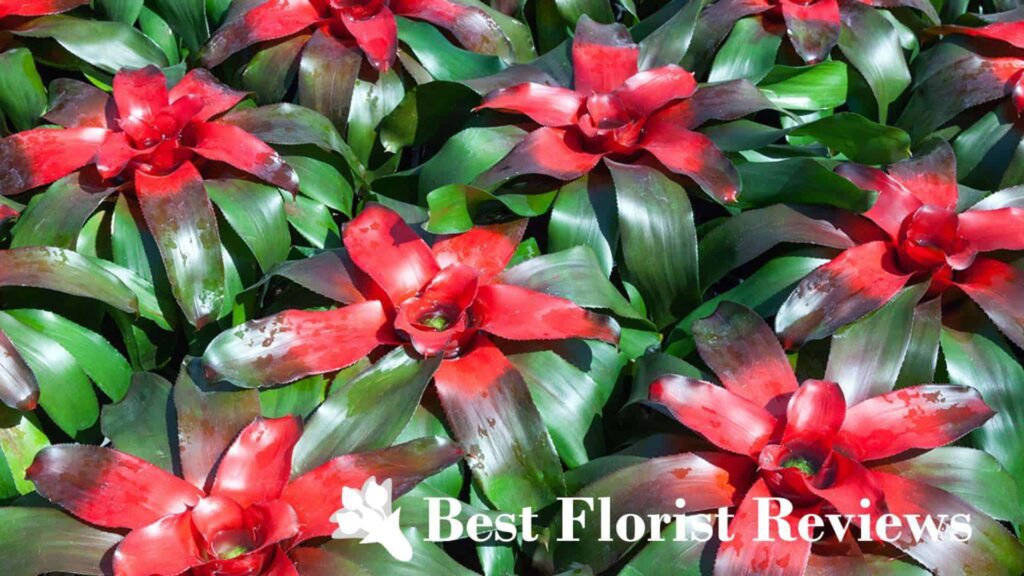

Botanical Name: Neoregelia carolinae
Origin: Brazil
Size: Up to 18 inches
Light: Bright light
Water: Every 4 to 6 weeks
Toxicity: Non-toxic
The Neoregelia carolinae, more commonly known as blushing bromeliad, is a crowd favorite among the species under the Neoregelia genus. Its foliage that changes color is one of the plant’s distinct charms.
Blushing bromeliads grow in a rosette-like arrangement, with a center that often turns red when its flowers are about to bloom. In some varieties, though, it’s the tip of the foliage that blushes.
They also have long, narrow strap-like leaves with glossy green textures. Some even have white stripes that add color to the plant.
A cluster of small purple flowers bloom in the center of the plant after about 3 years, and the display can last for 6 months, making the home they’re in look more colorful and vibrant.
Best for: It’s a perfect gift for anyone who is constantly busy. The plant doesn’t need constant watering and will grow just fine as long as you put it in a place that receives bright light, so they don’t require much care.
Earth Stars Bromeliads
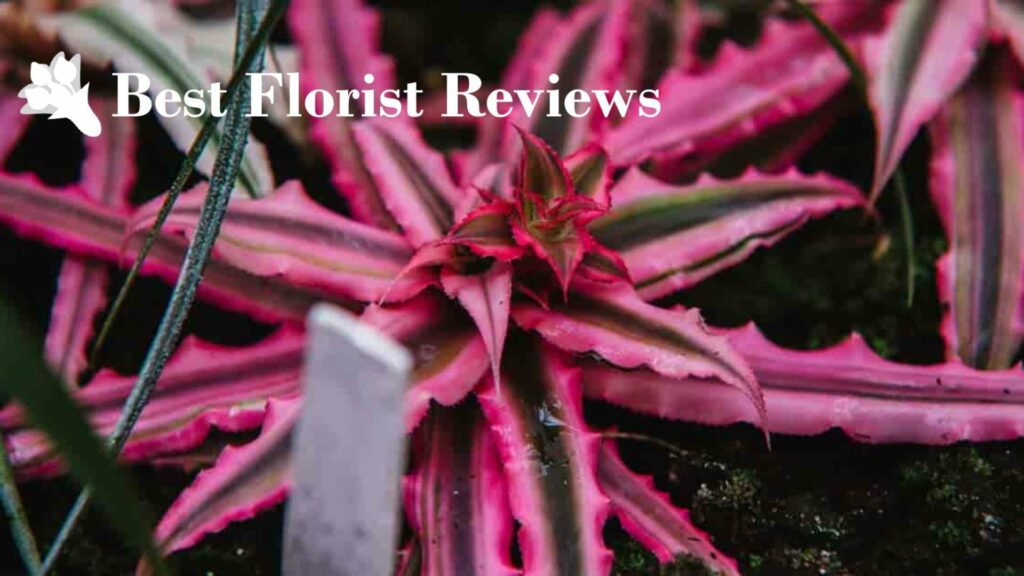

Botanical Name: Cryptanthus spp
Origin: Brazil
Size: Up to 3 feet
Light: Bright, indirect sunlight
Water: Only when the soil dries up
Toxicity: Non-toxic
Earth Star is a striking plant from the Cryptanthus genus and Bromeliad family. The plant has pink, red, or purple foliage with a green-striped center that grows in a flat rosette shape.
It’s the best gift for people who live in regions with no harsh winters, as it cannot survive freezing weather. It also requires indirect sunlight, so you should let the receiver know that it’s perfect for indoor settings.
Earth Star plants can tolerate drought for a short period, so they won’t die immediately if they forget to water them. They also don’t need pruning and repotting, as they tend to grow slowly.
Best for: Earth Star is a perfect gift for those sensitive to fragrances since the scent Earth Star flowers emit isn’t that noticeable.
It’s also best for people who live in a place with a warm climate most of the year.
Queen’s Tears Bromeliads
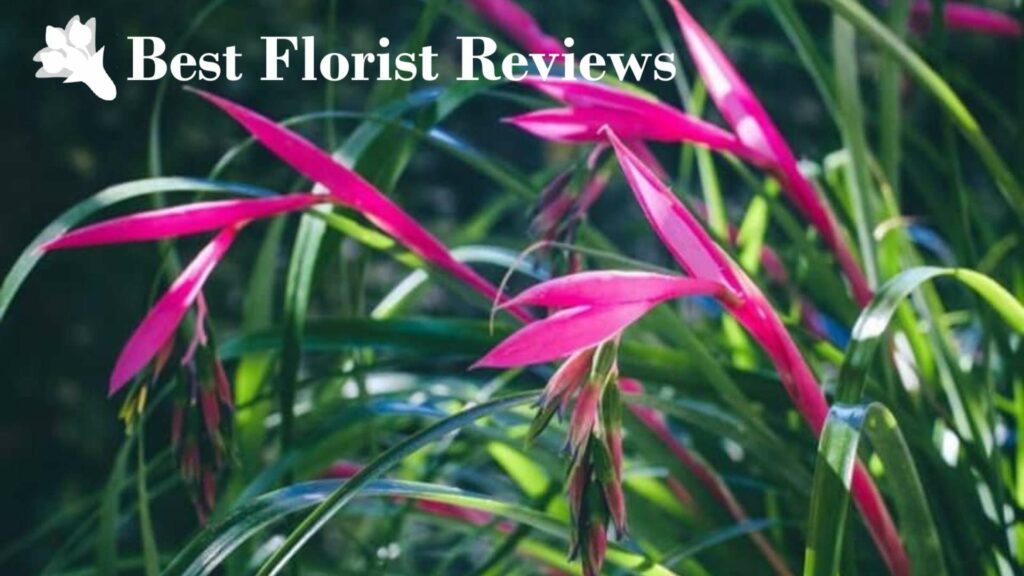

Botanical Name: Billbergia nutans
Other Name: Friendship plant
Origin: Argentina, Brazil, and Uruguay
Size: Up to 18 inches
Light: Bright, indirect light
Water: Once a day, but avoid soaking the soil
Toxicity: Non-toxic
Queen’s Tears plant’s colorful appearance makes it one of the best bromeliad plants to gift your friends. Its pink stem grows a cluster of drooping trumpet-shaped flowers that have pink and green bracts and light green and blue petals.
This plant is also known as the “friendship plant” because of how easy it is to propagate and share.
Queen’s tears can grow up to 18 inches, so they may need to repot it before flowering to give it more space. As such, it’s best given to friends who are experienced in growing plants since repotting may be challenging for some newbies.
Aside from repotting, the plant is generally low maintenance. It’s drought tolerant to a certain degree, so it’ll survive even if the recipient misses some watering.
Best for: It’s the perfect gift for friends who like decorating their living space with colorful plants.
The plant can also grow with other types of plants, as it’s non-parasitic.
Scarlet Star Bromeliads
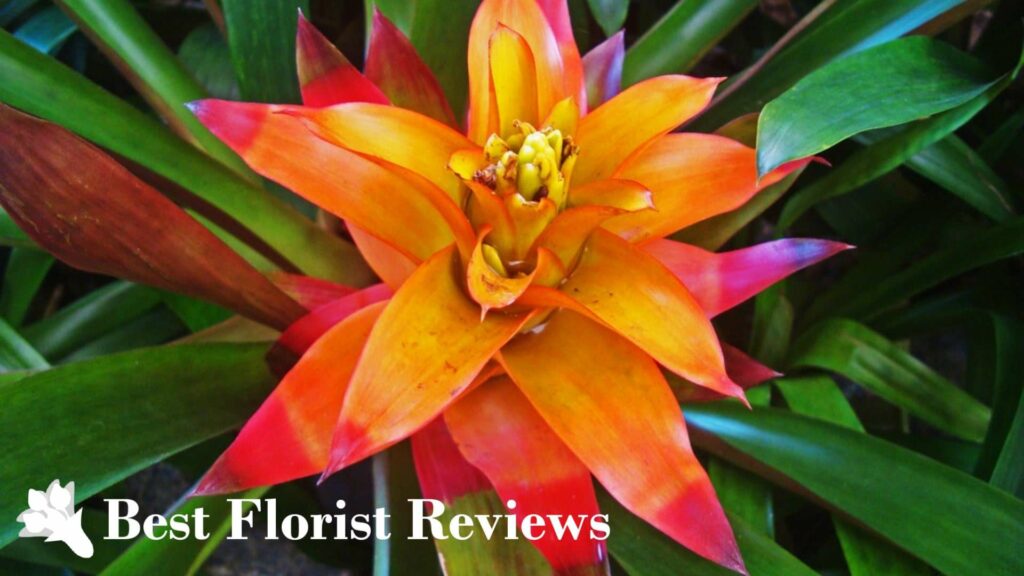

Botanical Name: Guzmania lingulata
Other Name: Drophead tufted airplant
Origin: Central and South America
Size: Up to 10 inches
Light: Bright, indirect light
Water: Every 3 to 4 weeks or when the soil dries up
Toxicity: Non-toxic
Scarlet Star is one of the most popular varieties of bromeliads grown today. It’s part of the Guzmania genus and is native to Central and South America.
The leaves of the plant are green with a slight touch of burgundy on the outer part. The leaves are also glossy and leathery, adding to their charm.
The flower is star-shaped, with a scarlet and orange hue, which only blooms once and takes about three to four years to emerge.
As such, if you plan on gifting it to someone who loves vibrant flowers, it’s best to buy one with a mature flower instead of a young plant.
Best for: The plant will add a pop of color to anyone’s living room or office, so it can serve as an additional home ornament to a friend or a lovely gift to a coworker.
Urn Plants
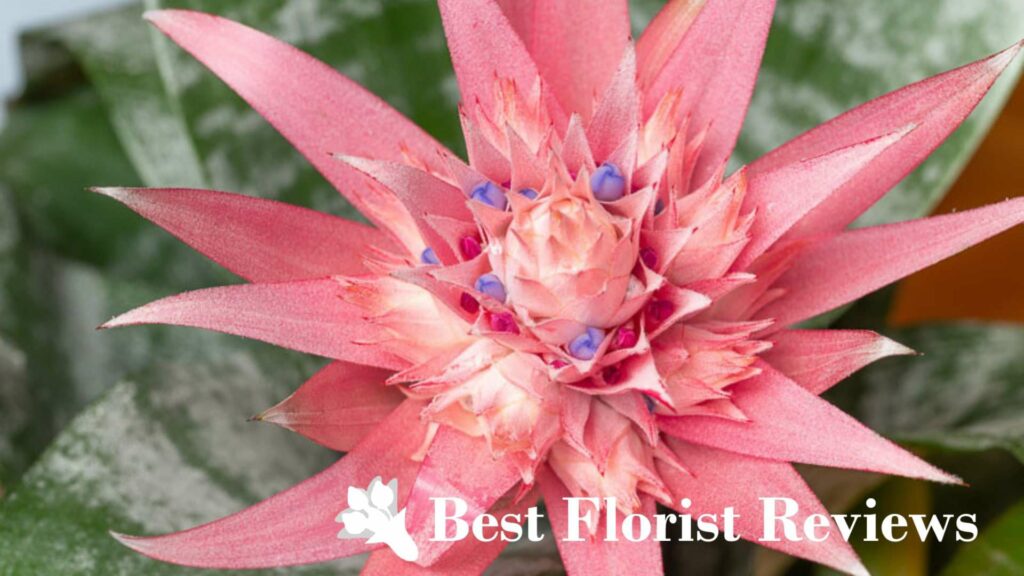

Botanical Name: Aechmea fasciata
Other Name: Urn plant
Origin: Brazil
Size: Up to 19 inches
Light: Bright, indirect light
Water: Once a week or every time the upper part of the soil is dry
Toxicity: Non-toxic
Urn plant is a bromeliad that consists of tough, leathery, dark green, and silver leaves that grow in a rosette arrangement, forming an urn in the middle. This “urn” has to be filled regularly for the flower to bloom.
The exotic-looking flower that blooms in the center of the foliage can add a unique look to anyone’s home’s interior. It’s a pink, star-shaped flower with spiky petals and small purple flowers in the center.
The flower only blooms after four to five years, so you can buy one that already has a flower if you find the green leaves too bland. However, if you bought one with a flower, expect it to only last a few months.
Best for: They’re not toxic to both people and animals, so they’re suitable gifts for friends or relatives who have young children or pets.
Flaming Sword Bromeliads
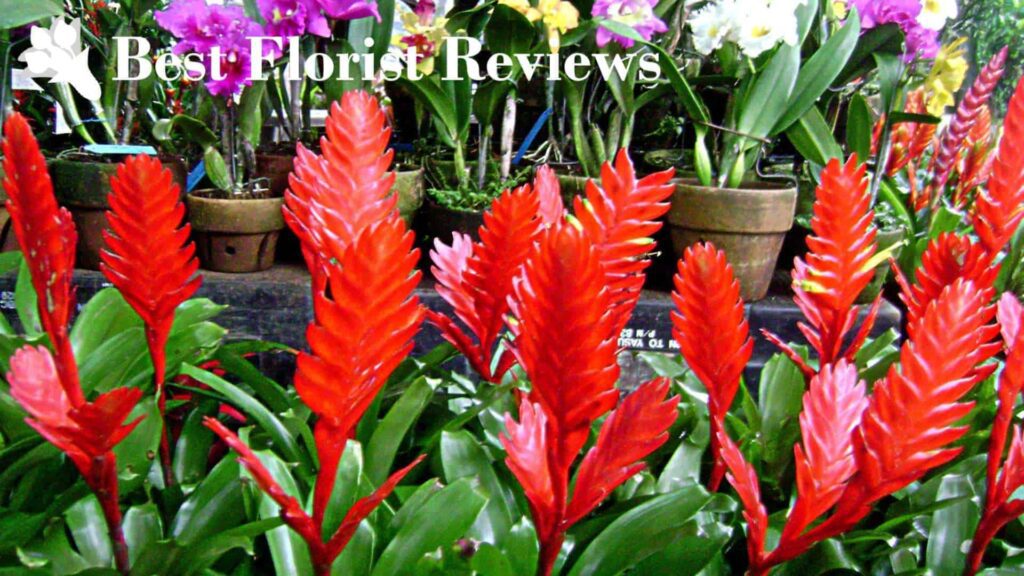

Botanical Name: Vriesea splendens
Origin: Trinidad, Guianas, and Venezuela
Size: Up to 2 feet
Light: Bright, indirect light
Water: Every 12 days or when the top part of the soil is dry
Toxicity: Non-toxic
Flaming sword bromeliad is a low-maintenance plant that’s suitable for indoor growing. It doesn’t require constant watering and repotting, so you can give them even to newbie growers.
Additionally, the plant can only grow to a mature size of two feet, which is good for indoors. It’s also non-toxic to pets, so you don’t have to worry about the safety of their beloved cats or dogs if the recipient is a fur parent.
Flaming sword sports bright orange and yellow bracts, shaped like a sword. Its banded light green leaves add more color to the plant and help it get more nutrients.
Best for: The plant is a perfect gift for your mom, grandmother, or aunty who loves vibrant and fancy-looking plants.
Best Outdoor Bromeliad Varieties for Gifting
Bromeliads are great landscaping choices because of their striking appearance. Some have loud colors, while some have a dramatic appearance, adding charm to every garden they’re grown.
Here are some of the best outdoor bromeliad varieties you can give to your loved ones who are looking to expand their garden.
Cherry Coke
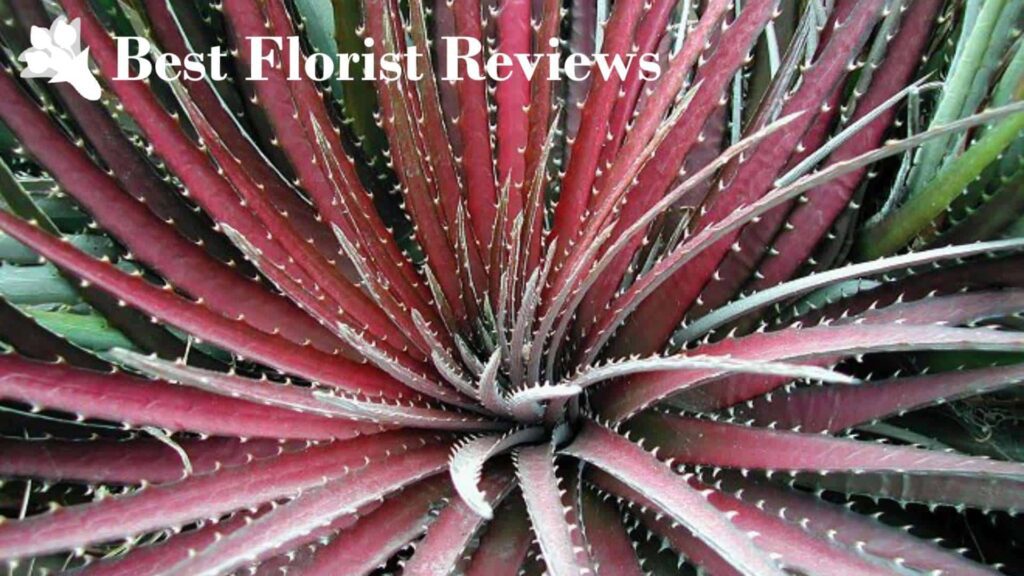

Botanical Name: Dyckia platyphylla
Origin: Brazil
Size: Up to 18 inches
Light: Direct or indirect sunlight
Water: When the soil dries out
Toxicity: Non-toxic
Cherry Coke is a bromeliad plant that has a very dramatic appearance. It has dark burgundy leaves that are rimmed with small sharp spikes, so be careful when touching them.
It can grow orange or yellow-orange flowers, which contrasts the foliage’s gothic look. It can also grow to a size of 18 inches, making its appearance more dramatic and striking.
When grown outdoors, Cherry Coke can add a unique personality to anyone’s garden. They can even attract hummingbirds once their flowers bloom.
Best for: They’re drought tolerant and low maintenance, so they’re a great gift to friends and relatives who just recently started working on their gardens.
Guapilla
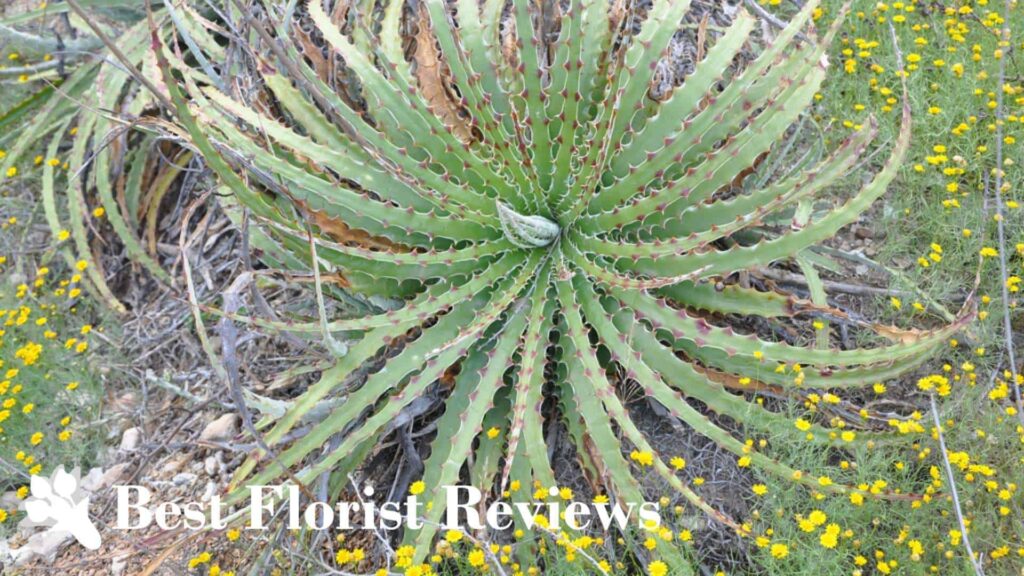

Botanical Name: Hechtia glomerata
Origin: Texas, Mexico, Guatemala
Size: Up to 2 feet
Light: Direct sunlight
Water: Once every 2 weeks
Toxicity: Non-toxic
Another bromeliad variety that’s armed with sharp teeth is Guapilla. It’s native to Texas, Mexico, and Guatemala but is now widely available around the world.
Its long green leaves grow in a wide-spread rosette-like manner. The leaves also turn reddish as they grow, adding to their ornamental value.
Guapilla requires direct sunlight to grow better, so it’s best grown outside. It’s also best given to people who do not have kids or pets, as the spikes around its leaves can also pose a hazard to them.
Watering them once every two weeks is sufficient to keep the plant healthy since it can tolerate drought well.
Best for: It’s an excellent gift for people living in areas that experience harsh weather changes, as it can tolerate cold temperatures.
Sapphire Tower
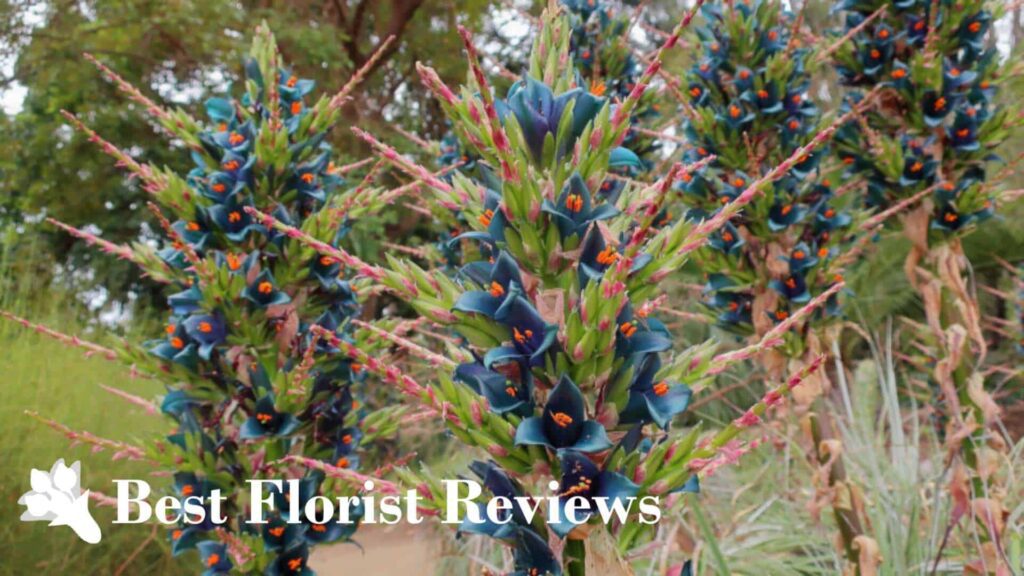

Botanical Name: Puya alpestris
Origin: Chile and Argentina
Size: Up to 4 feet
Light: Direct sunlight
Water: Once a week or when the upper part of the soil dries out
Toxicity: Non-toxic
Sapphire Tower might just be one of the most beautiful plants from the Bromeliad family. The teal-colored cup-like flowers with their orange anthers are some of the most eye-catching flowers that can decorate anyone’s garden.
The flowers grow in clusters on the plant’s tall, thick green stem, making it look like a tower. The tower can grow to a mature size of four feet, so it won’t take up much space in your garden.
Sapphire Tower, though, is more than just its majestic appearance. The best part about this plant is its resiliency, allowing it to survive harsh conditions.
It can survive temperatures as low as -4 °C but is best grown in warmer climates. It also requires direct sunlight, which can be hard to get if it’s placed indoors.
Best for: They’re the best gift to a friend or relative whose garden is mainly composed of colorful and extravagant plants, as they can blend well with them.
Pink Quill Bromeliads
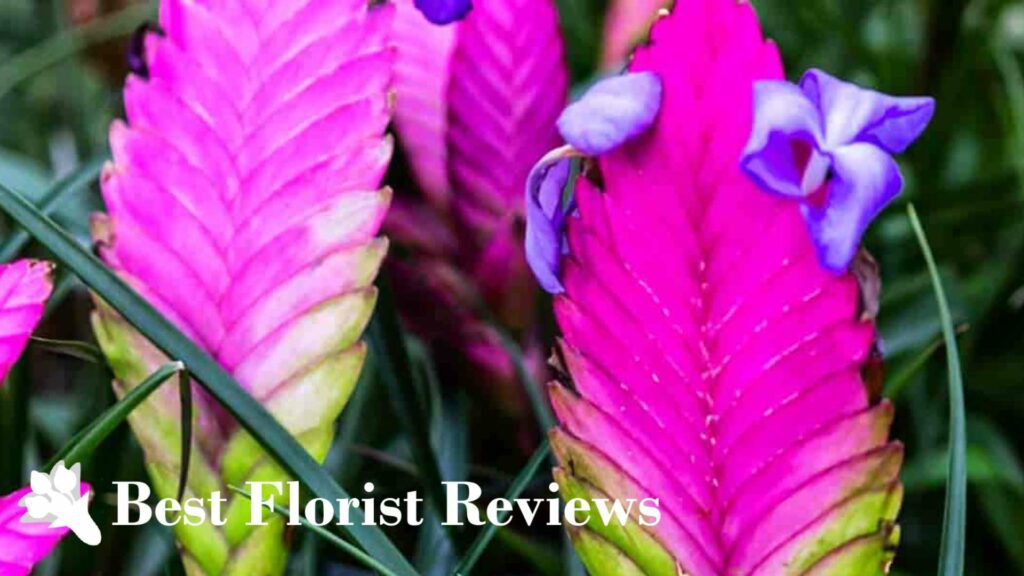

Botanical Name: Tillandsia cyanea
Origin: Ecuador
Size: Up to 10 inches
Light: Bright, direct, or indirect light
Water: Once or twice a week
Toxicity: Non-toxic
Pink quill bromeliads can only grow to a mature size of ten inches, which is a lot smaller than the other outdoor bromeliads listed here. However, the plant’s bright and eye-grabbing appearance makes it perfect for your friend’s terrace and patio.
The plant has arching, thin green leaves that grow spirally. On the center of the rosette leaves is a beautiful group of pink bracts, where violet flowers will soon bloom.
Like most bromeliads, pink quill only blooms once and will start to die after the flowers emerge. However, you can move its offsets to a different pot, and they will grow to become beautiful plants if taken care of.
Best for: It’s best given to people living in countries or cities with warmer climates, as they may not be able to tolerate cold weather.



